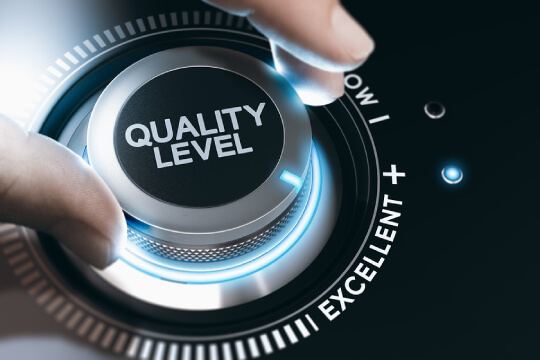Quality Monitoring & its Best Practices
Introduction
Building a reputation takes a lifetime and only takes a second to destroy. This applies to customer service businesses as well. Every call center goes all-out to provide the best customer experience; however, a single bad experience may lead the customers to bid adieu.
Call center quality monitoring makes sure that as a service provider, you’re responsive to the customer’s needs. To make customer interaction better, the management adopts several practices which we will discuss here.
Quality Monitoring (QM)
QM is a process that focuses on customer interaction alignment with the set business goals. QM identifies the customers’ issues, improves customers’ experience, and establishes a set communication process with loyal and new customers.
QM in call centers helps improve the agents’ performance and enhances the customers’ satisfaction level. If the interactions are of utmost quality, the volume (handling time) decreases, and the key indicators like CSAT (Customer Satisfaction) and NPS (Net Promoter Score) increase.
Best QM Practices
Since all the call centers run on their unique business model and approach, it is essential that specified practices are followed to align with your business requirements and goals.
Following are a few best practices that provide assistance in creating the QM process, improving the quality, and fulfilling the QM tasks effectively and efficiently:
1. Self-Assessing your current position
To enhance QM, the company should understand the customer’s interest in using their services and how the company may move forward with the competition by their side. Market research and customer feedback can bridge the call centers’ shortfalls and satisfies them. Assistance from third-party consultants can be acquired to get an unbiased and neutral view. Assessing the current business position allows you to create a plan to attain the set goals and meet customer needs.
2. Developing a Strategy
One of the best practices in CCQM is developing a strategy and sticking to it without any failure. After getting a clear picture from the self-assessments, an assessment of required changes could be made. This may require a lot of data points; however, classifying the adversely affecting metrics and planning to fix them is the key to meeting the goals. Moreover, the call centers must establish dynamic goals and move towards achieving them to ensure that the overall quality is improved.
3. Calls Recording and Monitoring
The most significant and essential call center practice is to listen to customer & agent interactions. To train the agents better and improve the quality, it is essential that customer calls are monitored effectively. This practice helps identify the average handling time, occupancy rate, satisfaction rate, net-promoter scale, and first-call resolution. This gives a clearer picture of the best, worst, or most extended customer calls.
In such scenarios, the implementation of advanced call center technology like speech analytics can help accomplish quality monitoring goals. As different customers have different needs, it is significant that call center agent interacts with the customers accordingly. Recording the customer interaction calls and real-time call monitoring can offer a broader view and help the call center managers/leaders to develop a better call script for customer interaction.
4. Make one person/team accountable to manage the QM process
Having a manager or evaluator lookout for the whole team of agents may be difficult; if possible, hiring someone with experience in QM practices can give the best outcome. Since a single person or a team is handling the QM process, this allows the person/team to take effective measures like coaching sessions or call monitoring to improve the quality. Moreover, if any call center agent requires assistance, such a person knows whom to reach out to. In simple words, the person handling the QM will offer support to the call center agents to improve their skill sets and uplift the customer satisfaction level.
5. Stick to the best call scripts
For increasing the customer satisfaction level, it is significant that the call center agent understands the customer’s needs clearly. Sticking up with a good call script may help the call center agents understand the customer’s needs by engaging them for a long time. Utilizing the most worked scripts can create a good impression on customers, help in receiving feedback, and improve the call quality. Involving the employees in developing the scripts may help move the mountain.
6. Offer Room for dispute
The call center must offer little room for agents to dispute the feedback received from the customers. This will be considered just and wise to develop the QM practices. It makes the agents feel that they have a voice and skin in the process, which can enhance productivity. Such disputes allow the call center agents to improve their skills, leading them to handle such situations like a pro. This also means that the call center agents must be provided timely feedback and its evaluation must be tracked constantly. This allows the call center agents to monitor their performance from time to time.
Now let’s conclude…
QM is a rich source of data and observation that allows the call center business to accomplish the set objectives and serve the customers as per their needs. To implement the QM effectively, advanced call center technology such as analytics, recording, and monitoring software can also be used. Through QM, a business can identify the issues, create an appropriate strategy, & implement it to improve the shortfalls and uplift the customer experience.
Request for Demo






